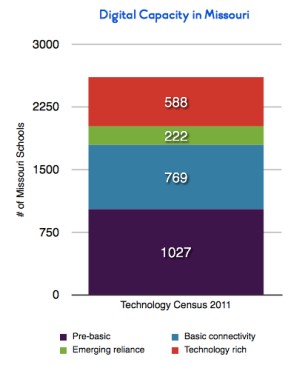Blended Learning: An Introduction
 No subject in education captures as much attention or triggers as much interest — across students, families, teachers and principals — as the promise of blended learning.
No subject in education captures as much attention or triggers as much interest — across students, families, teachers and principals — as the promise of blended learning.
Researchers Heather Staker and Michael B. Horn define blended learning as “a formal education program in which a student learns at least in part through online delivery of content and instruction with some element of student control over time, place, path, and/or pace, and at least in part at a supervised brick-and-mortar location away from home”
An Education Week story reveals that schools and districts in California, Arizona, Virginia and elsewhere are experimenting with computer-based learning in the elementary grades.
No single post can cover blended learning from all angles. In this first of a series, we will consider the fundamental issue of infrastructure and access. After all, blended learning can only be as good as the ground it stands upon.
One study from 2012 found that in Missouri, close to 98 percent of K -12 public schools have computers and more than 94 percent have some access to the Internet. But access alone does not allow teachers to use technology to transform the learning environment into a space where individual instruction blends seamlessly with a digital curriculum.
Many schools may have state-of-the- art equipment, but the study finds that only 20 percent of Missouri schools, as of 2012, had sufficient bandwidth capacity to take advantage of the personalized and rich digital instruction now available. This chart shows the digital capacity of Missouri schools, and how only a fraction of Missouri schools fall into a category considered “technology rich” by current standards.
The statewide MoBroadbandNow initiative seeks to bring broadband grants and loans to the state, and has delivered $261 million for 19 projects to date. Unsure of how much broadband your classroom or school enjoys? Try this free speed test.
Bandwidth alone doesn’t solve all problems — witness the roll out of Google fiber in Kansas City, where the digital divide remains.
The Missouri State Education Technology Directors Association (SETDA) expects the demand for bandwidth to increase ten-fold by the 2017-18 school year and recommends that school leaders recognize this trajectory and plan accordingly.
In the next post, we will look at blended learning from a principals point of view.

